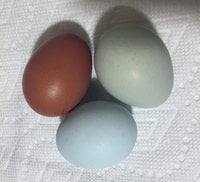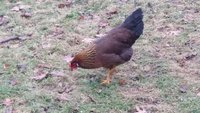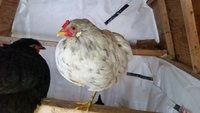I discovered a breed I think I need 
True blue whiting? Never heard of it until I was playing with the chick selector on McMurrays... Here they are.
https://m.www.mcmurrayhatchery.com/whiting_true_blue.html
They sound intriguing, almost exactly what I'm attempting to cross myself!
Blue eggs, hardy in cold or hot weather, exellent free ranging layer.
Anyone have info or tips to share to encourage, or discourage me from adding these beauties to my free ranging flock?
TIA

True blue whiting? Never heard of it until I was playing with the chick selector on McMurrays... Here they are.
https://m.www.mcmurrayhatchery.com/whiting_true_blue.html
They sound intriguing, almost exactly what I'm attempting to cross myself!
Blue eggs, hardy in cold or hot weather, exellent free ranging layer.
Anyone have info or tips to share to encourage, or discourage me from adding these beauties to my free ranging flock?
TIA

Last edited:




 also do you or any one , who knows about the Sapphires..? i believe they are cross of a cream leg bar roo X a white leg horn hen, but thats all i know , just needed egg & temperament info on both the WTB & Sapphires
also do you or any one , who knows about the Sapphires..? i believe they are cross of a cream leg bar roo X a white leg horn hen, but thats all i know , just needed egg & temperament info on both the WTB & Sapphires 



